Published on: 10/12/2022
Last updated on: 01/04/2023
In a hurry? Go directly to the top 9
The question of when someone falls in the category of heavier runner is a thorny subject. In running, just like in any other fitness activity, weight is not necessarily a negative aspect, as we know that lots of muscle can weigh more than fat (or rather, they weigh the same in absolute terms, but muscle is denser (1)).
However, when you’re starting running because you want to lose weight and you’re on the heavier side, you’ll want to look for running shoes that can feel comfortable and offer you the shock absorption you need to not want to give up right away. And what is “on the heavier side”? Let’s start with the CDC’s definition (2) of adults whose Body Mass Index (BMI) (3) is over 25. Another commonly accepted criterion among runners and shoe brands is to be over 176 lbs (80 kg).
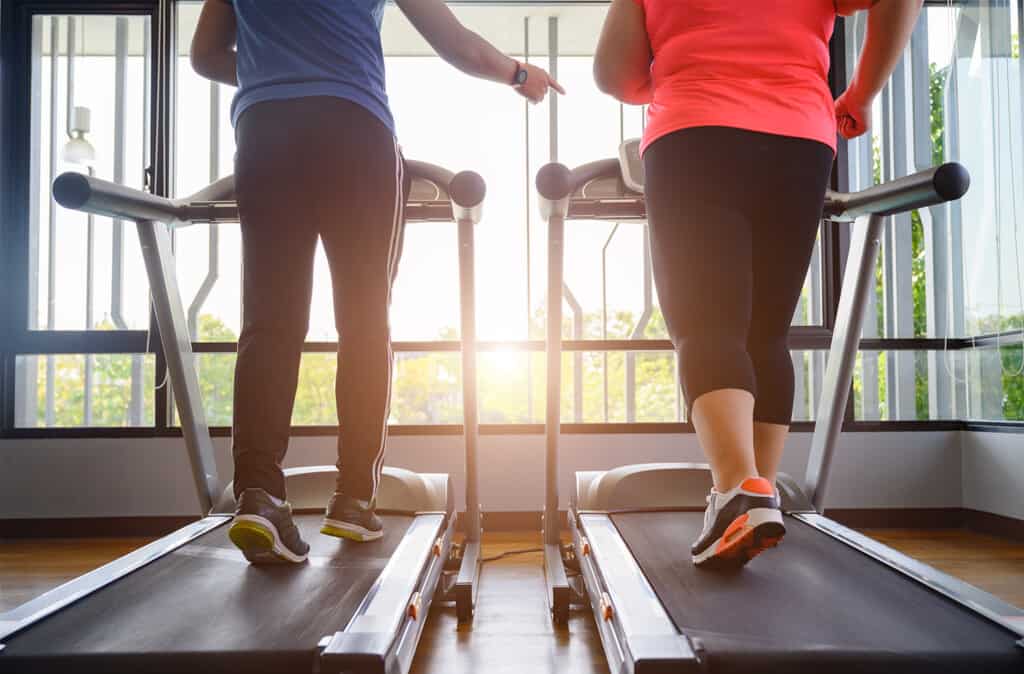
So, what are the best running shoes for heavy men and women in 2024, and how can you make sure you stay injury free when you start running to lose that extra weight?
This article will cover our top picks of shoes for heavier runners and investigate what makes good running shoes for those who weigh more and what to look out for when you shop for your next pair.
Not a heavy runner? Check out our overall selections for road and trail.
Our Method

Since starting out in 2017, we’ve analyzed the reviews from real runners and experts in the running world, putting them together to reach a balanced view of the best products. Our goal is to help you find the right running shoes for your needs, presenting a systematic review of the pros and cons of what’s on the market.
Specifically, when it comes to recommendations for heavier runners, we have looked at the scientific research to find out how BMI influences the running pattern of novices and experienced runners alike. We’ve reviewed the likelihood of getting injured (4) when you’re overweight and running and how this can be avoided through (among other things) the best running shoes for your weight.
Finally, we’ve narrowed our research to the brands that make the best road and trail running shoes for people on the heavier side. In the following review, we give you some of our top recommendations and tips on picking shoes that will help you avoid injury and enjoy your runs.
Our Selection of the Best Running Shoes for Heavy Runners in 2024
Comparison Table
| Shoe | Heel height | Drop | Weight | Cushioning | Best for | Best offer |
|---|---|---|---|---|---|---|
Asics Gel-Nimbus 24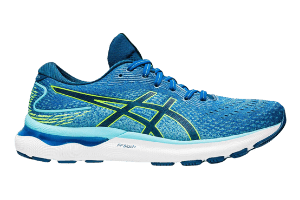 | 26 mm | 10 mm | 10.3 oz/292 g | Balanced | Overall | Check prices → |
Altra Paradigm 6.0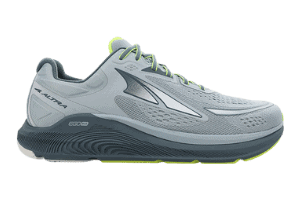 | 34 mm | 0 mm | 10.3 oz/292 g | Soft | Zero drop | Check prices → |
New Balance Fresh Foam More v3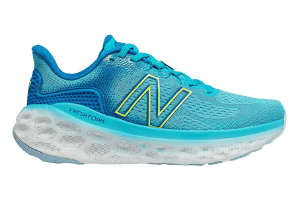 | 33 mm | 4 mm | 309 g/10.9 oz | Soft | Max cushion | Check prices → |
Hoka One One Rincon 3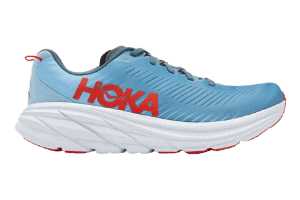 | 29 mm | 5 mm | 7.4 oz/210 g | Soft | Snappy ride | Check prices → |
Hoka One One Gaviota 4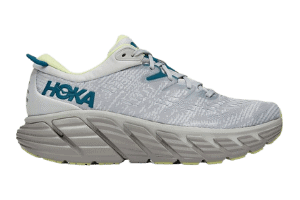 | 40 mm | 5 mm | 10.6 oz/300 g | Soft | Stability | Check prices → |
Nike Air Zoom Structure 24 | 27 mm | 8 mm | 11 oz/312 g | Balanced | Women | Check prices → |
Brooks Cascadia 16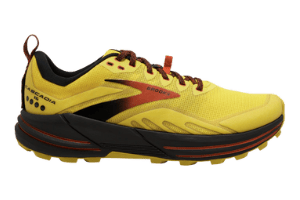 | 29 mm | 8 mm | 10.5 oz/298 g | Soft | Trail all-rounder | Check prices → |
Asics Gel Venture 8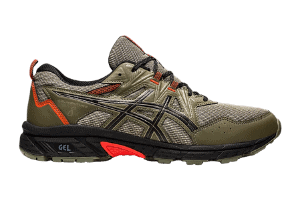 | 20 mm | 10 mm | 9.8 oz | Balanced | Affordable trail pick | Check prices → |
Saucony Peregrine 12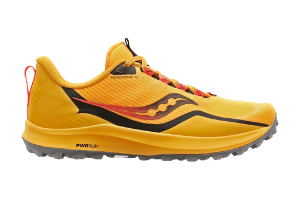 | 27 mm | 5 mm | 9.6 oz/272 g | Firm | Structure for trails | Check prices → |
1. Asics Gel-Nimbus 24: Best Running Shoe for Heavy Runners
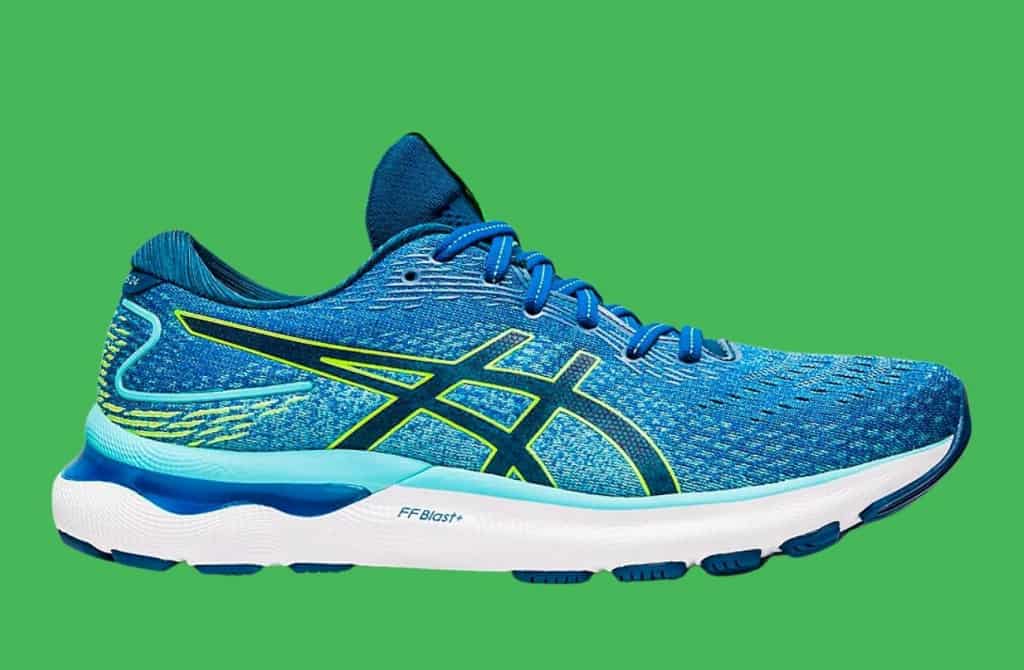
Facts
Stack height: 26 mm (heel), 16 mm(forefoot) for men; 28 mm (heel), 15 mm (forefoot) for women
Heel drop: 10 mm (men’s), 13 mm (women’s)
Weight: 10.3 oz/292 g for men, 9 oz/255 g for women
Cushioning: Balanced
Without being an overly cushioned shoe, the Gel-Nimbus has long been Asics’ top shoe for all newcomers to the world of running. Offering excellent comfort and support for runners of all sizes, the GEL technology cushioning guarantees shock absorption while retaining a feel for the terrain. This sets the Asics apart from heavily cushioned shoes that lose some of the responsiveness (albeit still very comfortable).
Asics Gel-Nimbus is on its 23rd edition, and the new pair features reflective accents to keep you safe on darker days and FLYTEFOAM Propel Technology to put an extra spring in your step. Thanks to its smooth feel, balanced stability and support, and supreme comfort, the Asics Gel-Nimbus 24 can easily become the go-to shoe for any novice runner looking to lose weight.
Pros
Cons
2. Altra Paradigm 6.0: Zero Drop, Max Comfort
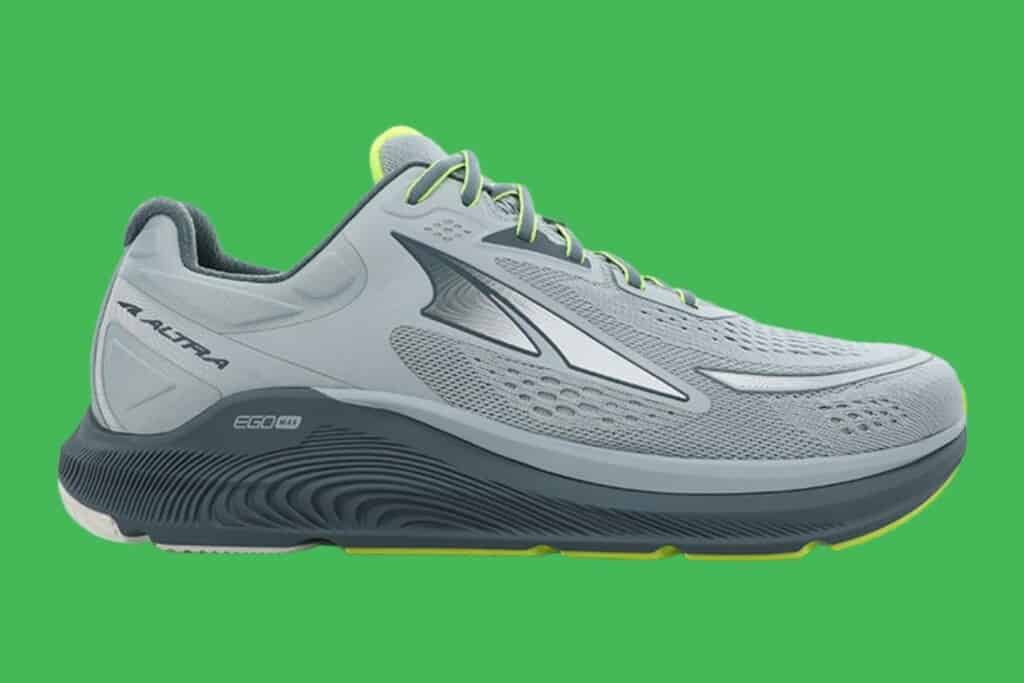
Facts
Stack height: 34 mm
Heel drop: 0 mm
Weight: 10.3 oz/292 g (men’s), 9.2 oz/260 g (women’s)
Cushioning: Soft
Another legend of comfortable stability running shoes, Altra makes one of the best pairs of shoes for heavier runners in their Paradigm model. This versatile running shoe feels much more lightweight than it looks. Indeed, the Ego Max midsole foam keeps your feet comfortable without weighing you down. The Balanced Cushioning technology behind the Paradigm 6.0 aims to keep toes and heels at the same distance from the ground, supporting better posture and more natural foot movement.
Altra is well-known for its wide toe box, which contributes to a more comfortable ride, while the upper holds the foot in place nicely. This means you’ll be stable during your runs without feeling too “caged in,” either. Another great feature of the Paradigm 6.0 is the StabiliPods, which prevent fatigue-induced pronation. That’s an excellent bonus for new runners, especially as you develop optimal running form.
Pros
Cons
3. New Balance Fresh Foam More v3: Most Cushioned Road Shoe
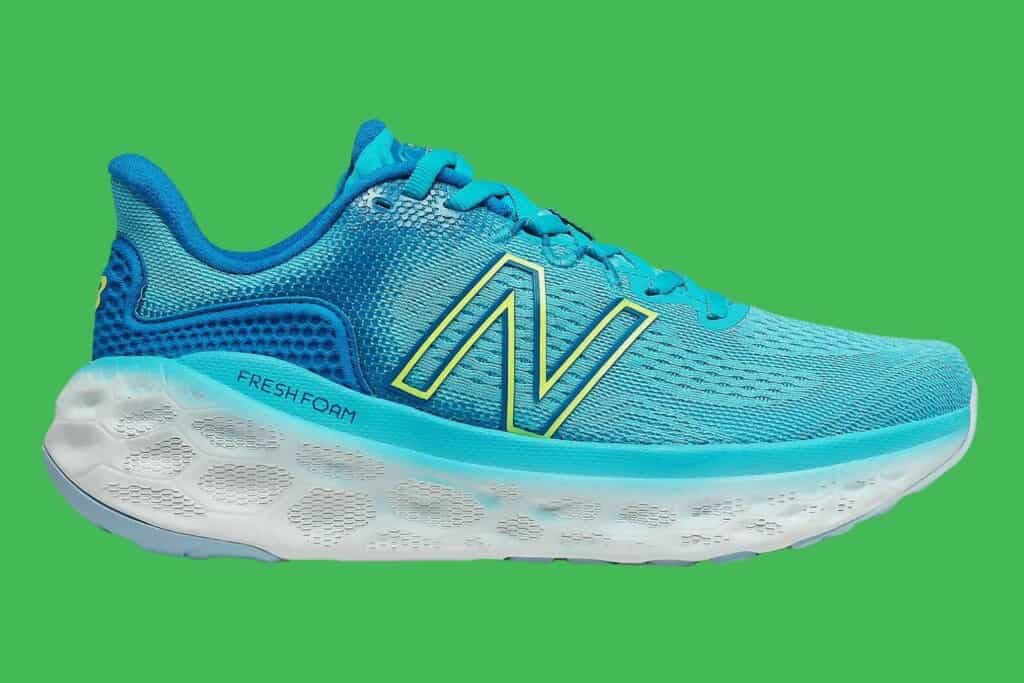
Facts
Stack height: 33 mm (heel), 29 mm (forefoot)
Heel drop: 4 mm
Weight: 10.9 oz/309 g (men’s), 8.7 oz/248 g
Cushioning: Soft
New Balance has always made running shoes that combine comfort and cushioning with a decent level of responsiveness, depending on your fitness level and running goals. For beginners to road running, the Fresh Foam More v3 offers a wonderful foamy midsole, lighter than in previous versions, which gives you some added bounce.
They also have excellent ventilation for to keep feet cool in the summer, thanks to the engineered mesh uppers.
On the outside, the New Balance Fresh Foam More v3 features the brand’s signature heel bevel with a rounded shape, contributing to a more comfortable ride and to a rocker design that has you moving effortlessly. This is further supported by flex grooves that help the heel-to-toe transition.
Many will consider this a bulky, more unwieldy running shoe than the others on this list, but we think they are some of the best running shoes for heavy men or women, providing support and comfort while not sacrificing a good amount of bounce for beginner runners.
Pros
Cons
4. Hoka One One Rincon 3: Best for Snappy Long Runs
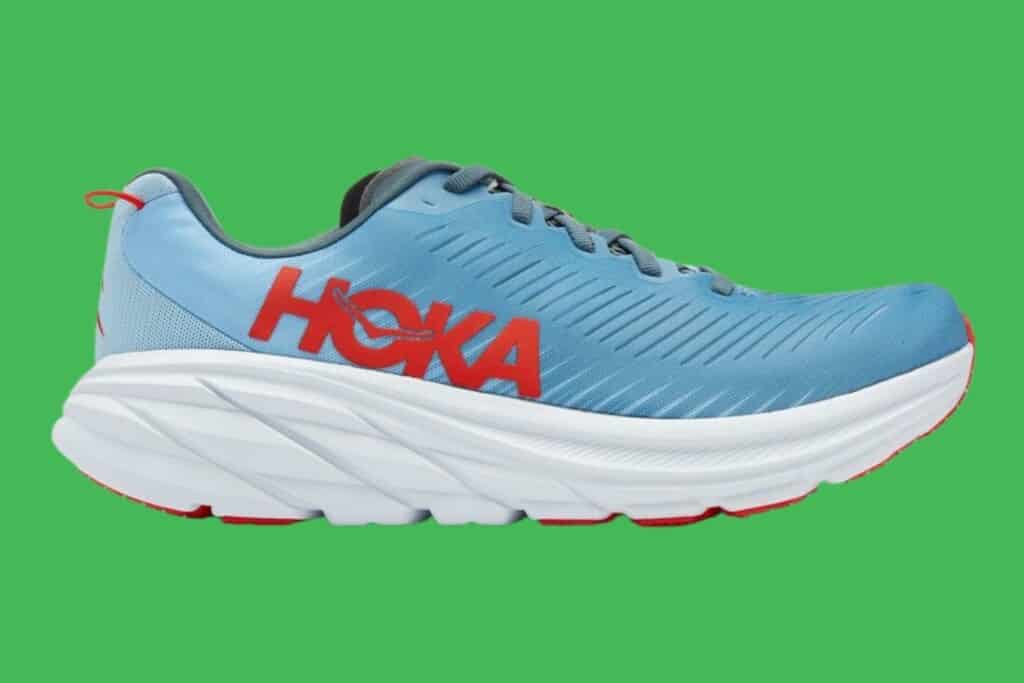
Facts
Stack height: 29 mm (heel), 24 mm (toes)
Heel drop: 5 mm
Weight: 7.4 oz/210 g (men’s), 6.2 oz/176 g (women’s)
Cushioning: Soft
One of Hoka One One’s excellent shoes, the Rincon 3, is focused on getting you the optimal speed while providing cushioning and comfort. This makes them light and fast while still giving some extra shock absorption that heavier runners will appreciate. You can run in the Rincons on the road and on hard-packed trails thanks to a durable and reliable outsole that feels at home on various terrains.
While they are not specifically designed for heavier runners, their excellent weight-to-cushioning ratio makes the Rincons a great recommendation for those carrying extra weight. Without sacrificing support, the Rincon is a light shoe that you can wear for your speed workouts as well as for your long runs. While the others on the list may weigh you down a little, especially in longer sessions, that’s not the case with the Rincons. The EVA foam in the midsole helps both with shock absorption and forward bounce, allowing heavier runners to run longer in better comfort.
We consider these shoes to be on the lighter cushioning side for a Hoka but still great for extra support and comfort for heavier runners.
Pros
Cons
5. Hoka One One Gaviota 4: Extra Stability for Beginners
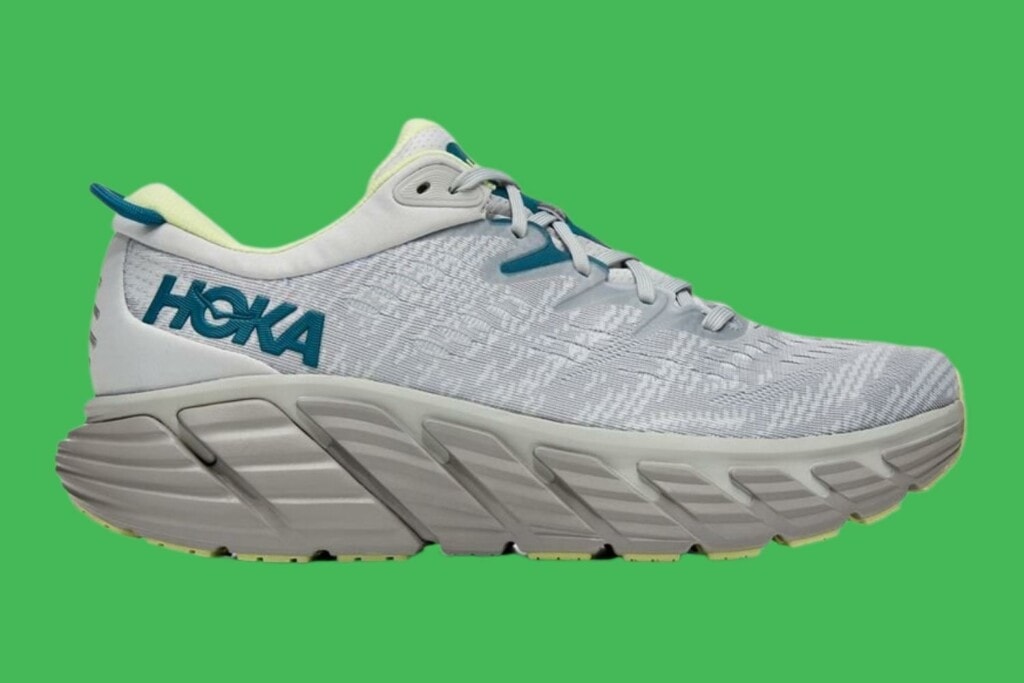
Facts
Stack height: 40 mm (heel), 35 mm (forefoot)
Heel drop: 5 mm
Weight: 10.6 oz/300 g
Cushioning: Balanced
It’s no surprise we would feature Hoka more than once in this list since their shoes offer such a supportive ride, especially for heavier runners or those concerned about joint health.
The Gaviota is well-known as a cushioned shoe dedicated to supreme comfort, with some extra support for overpronators. The Gaviota are great stability shoes thanks to a combination of CMEVA mousse in the midsole and Hoka’s J-Frame technology. They also feature a curved outsole just underneath the toes, helping you rock forward and get an extra boost during your runs.
The newest Gaviota has also been improved from previous editions, adding a plush layer around the ankles to make them more comfortable and a better upper that doesn’t move during runs (as previous models had been criticized for doing).
The shoe seems to require a little while to break in properly for maximum comfort, as many runners report it feeling firm at the start. However, once they get going, there’s a subtle energy return and a stable ride that you can enjoy for casual runs, recovery jogs, and longer days out.
Pros
Cons
6. Nike Air Zoom Structure 24: Best Supportive Shoes for Women
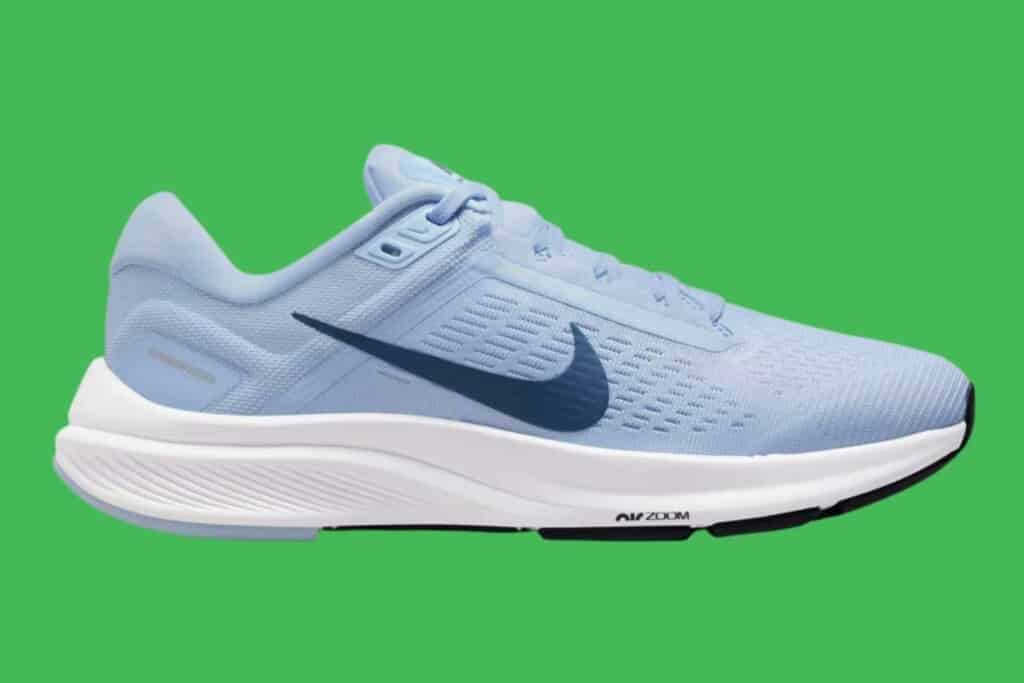
Facts
Stack height: 27 mm (back), 19 mm (front)
Heel drop: 8 mm
Weight: 11 oz/312 g (men’s), 9 oz/256 g
Cushioning: Firm
Nike has been making a moderate stability shoe with their Structure model, of which the Structure 24 is simply an update of the 23 version. This is a great shoe for heavier women thanks to the forefoot Zoom Air cushioning, which helps give you a bit of a boost. Moreover, it features a segmented outsole for good grip on a variety of terrains and for a quick turnover.
There is a fully sleeved upper, which means that it fits well and keeps feet secure. The tongue and heel are both soft and comfortable. As an upgrade from the Structure 23, the new version has a more flexible upper, which breaths better, keeping you more comfortable in hot weather. The newer version is also a little lighter than the previous one.
Finally, the Structure 24 can be a great go-to shoe for overpronators, thanks to the Dynamic Fit integrated flywire cables with an internal band around the midfoot, offering great arch support and an adaptive fit.
Pros
Cons
7. Brooks Cascadia 16: Trail Running All-Rounder
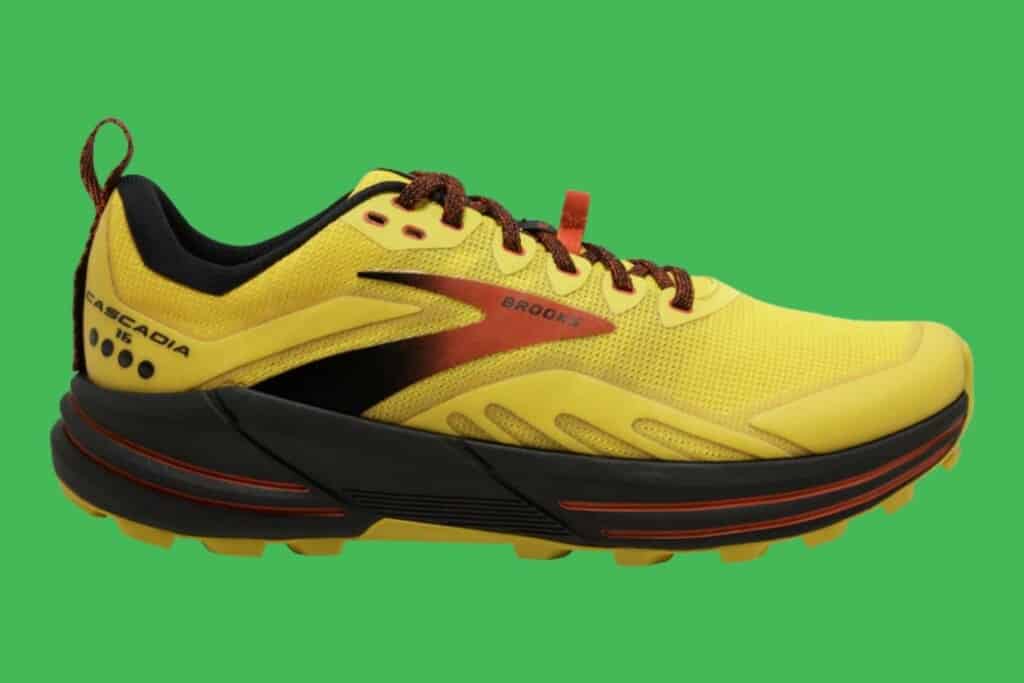
Facts
Stack height: 29 mm (back), 21 mm (front)
Heel drop: 8 mm
Weight: 308 g
Cushioning: Soft
The Cascadia is by far the most popular trail running shoe made by the American brand Brooks, and for good reason. It has a comfortable fit, wide toe box, durability, and stability to take you on amazing off-road adventures. The Cascadia 16 is one of the best trail running shoes for heavier runners. Thanks to the stable ride and great grip, they are ideal for heading into the great outdoors through pretty much any weather conditions.
These are not super nimble trail shoes designed for short races. The Cascadia is the sort of running shoe you turn to for sturdiness and reliability, with which they’ll definitely reward you. For heavier runners, it’s more comfortable than most, thanks to its wider forefoot, and the narrow heel ensures a tight fit. A nice thick tongue keeps the top of your foot protected and comfortable. However, the cushioning is not as plush as, for example, a pair of Hoka Mafate Speed would give you. But it’s still rather soft!
The Cascadia 16 feature an updated nylon rock plate, providing excellent underfoot protection while giving a bit of energy return. It also flexes laterally, making it more responsive on uneven terrain.
Pros
Cons
8. Asics Gel Venture 8: Affordable Trail Shoes
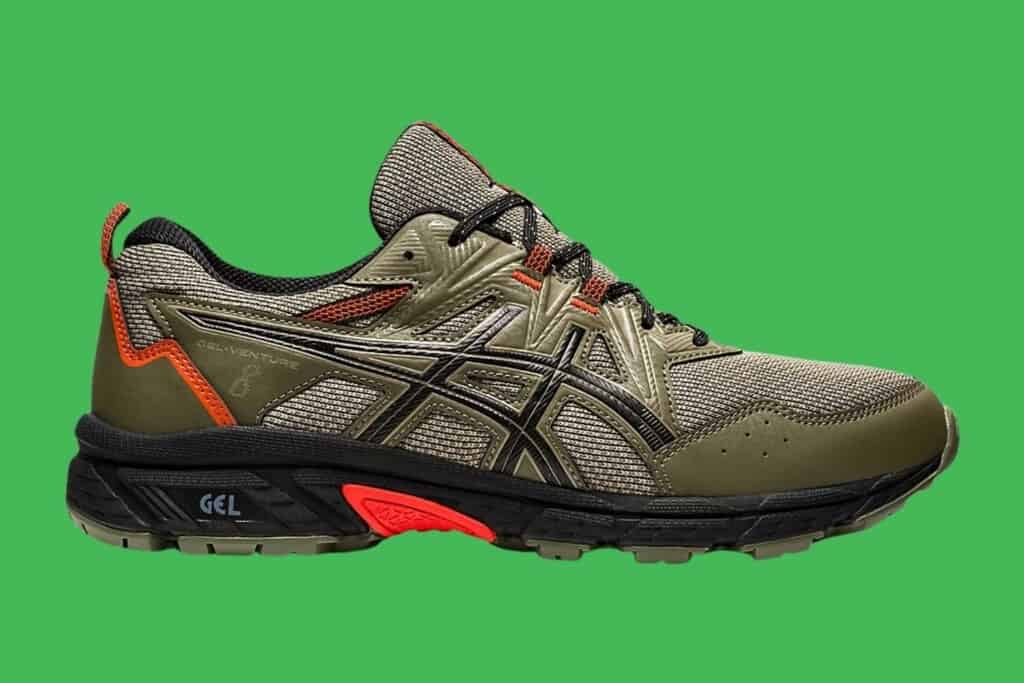
Facts
Stack height: 20 mm (back), 10 mm (front)
Heel drop: 10 mm
Weight: 10.7 oz/303 g (men’s), 8.9 oz/252 g (women’s)
Cushioning: Balanced
Without a huge stack height, the Asics Gel Venture 8 is incredibly nimble and light for the cushioned, comfortable feeling they elicit for heavier runners. Designed as a middle-of-the-range trail shoe, the Gel Venture doesn’t have excessive cushioning nor offers too much support for overpronators. However, it is simply a great, good-value trail shoe with good shock absorption and a comfortable ride.
The GEL technology in the rear foot and the EVA midsole contribute to a great feeling of comfort on the trails. At the same time, the shoes feature Asics’ ORTHOLITE sockliner for additional cushioning and foot support, providing a nice bounce of energy and a precise fit (it molds to your foot shape). The upper is sturdy but breathable. However, they do get quite warm on summer days, according to runners.
Finally, most runners report a good return on investment with these shoes: not only do they not cost anywhere as much as all the other running shoes on this list, but they are also extremely long-lasting.
Pros
Cons
9. Saucony Peregrine 12: Best for Structured Trail Shoes
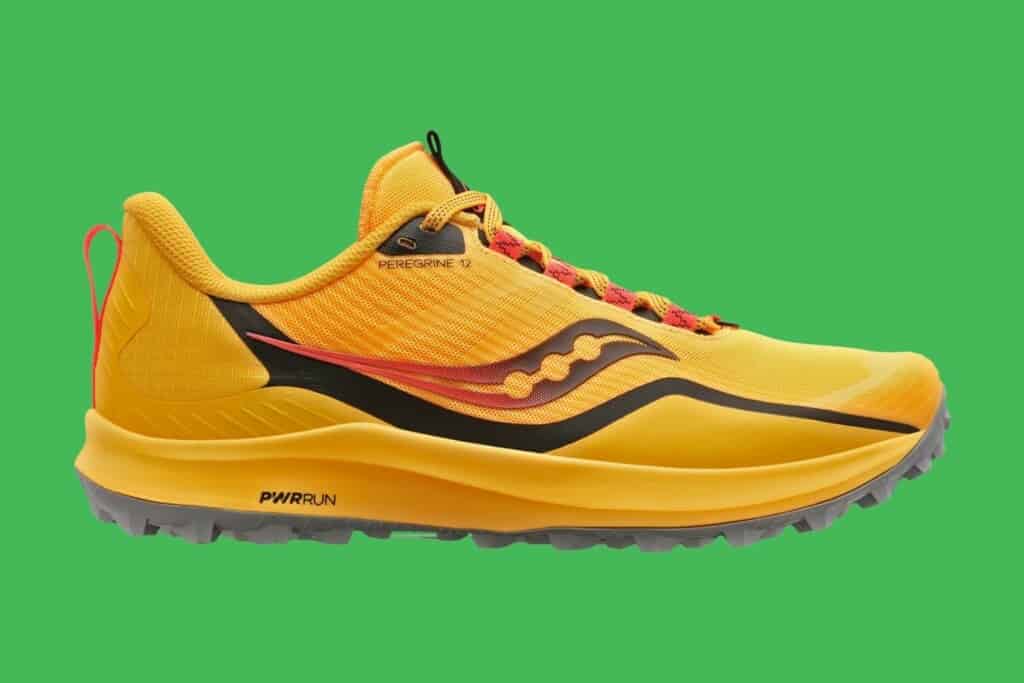
Facts
Stack height: 27 mm (heel), 23 mm (toes)
Heel drop: 4 mm
Weight: 9.6 oz/272 g (men’s), 8.4 oz/237 g (women’s)
Cushioning: Firm
Light and versatile, the Saucony Peregrine 12 offer a stable ride that still makes them some of the best running shoes for heavy men and women. With a big stack that protects you from uneven terrain and a firm midsole, they’re not in the cushioned category, but they still retain comfort for longer runs. The outsoles feature Saucony’s signature PWRTRAC rubber and aggressive lugs that make them ideal for muddier terrain. The midsole and rock plate have a bit of stiffness, but just enough that it’s protective rather than uncomfortable.
While the Brooks Cascadia is definitely a more comfortable pair of running shoes, the Saucony Peregrine is much better on technical trails and will suit a more experienced off-road runner. The Peregrines are designed for more speed and agility, with a secure upper fit and comfortable enough to get you through mid-length runs.
Pros
Cons
Other Good Contenders
The following shoes are also great picks to consider for heavy runners:
- Brooks Adrenaline GTS 22
- Asics Gel Kayano 28 or 29
- Brooks Divide 2
- Mizuno Wave Rider 25
What Makes a Good Shoe for Heavier Runners?
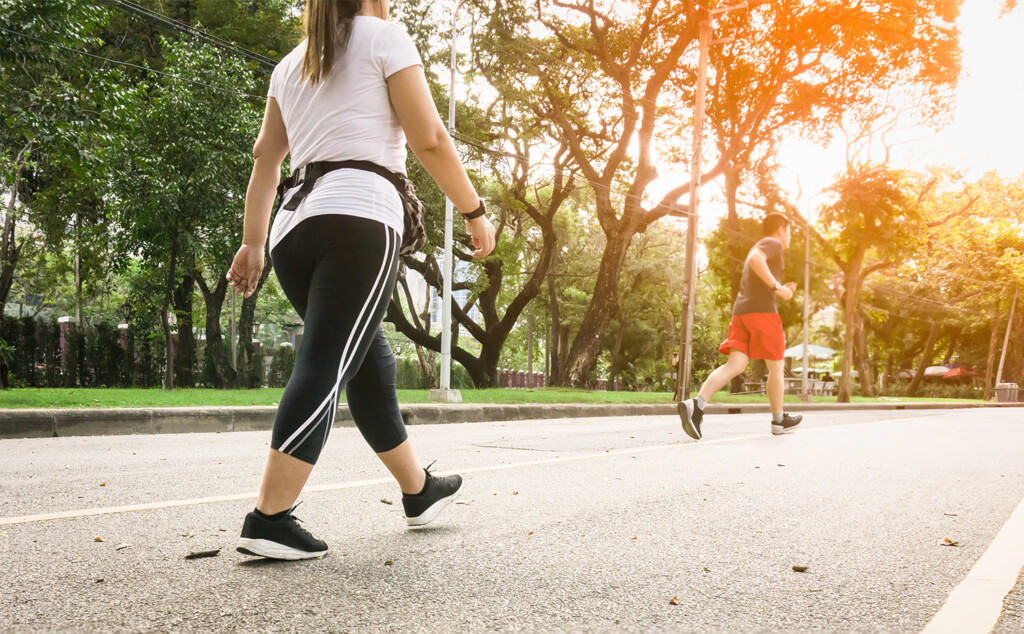
Is there a link between your weight and risk of injury?
Ultimately, a heavy runner looking for the best shoe to run in is probably concerned about two things: comfort and risk of injury. The first is easy to work on by checking reviews like this one and looking for shoes for heavy runners in your neighborhood running stores. Moreover, comfort is a question of personal preference and of wearing in your shoes, so you will find your ideal pair through trial and error.
How about the risk of injury? The incidence of running-related injuries is high in any type of novice runner (4), so when heavier men and women start exercising for the first time and increase their training volume rapidly, they will normally be more at risk of getting injured. It is important to stress, therefore, the strong link between the degree of experience of the runners, regardless of their weight.
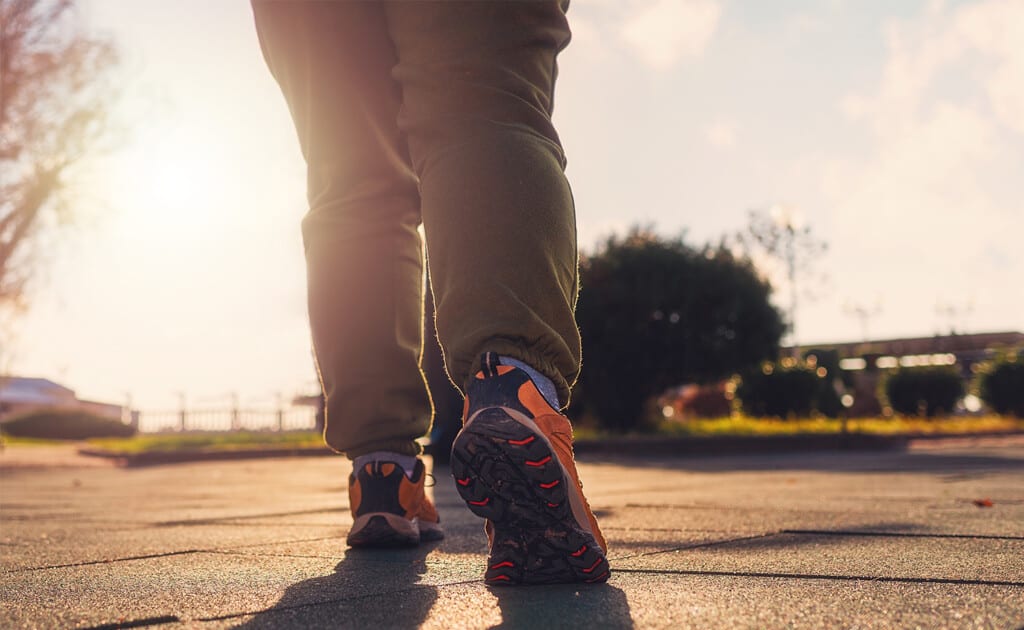
However, it is true that the risk of injury for heavier runners is also linked to their choice of shoe. Lightweight shoes without adequate support have been found (5) to cause harm to heavier runners because of reduced shock absorption.
There’s an interesting choice between opting for a lighter shoe to improve speed and agility and ensuring adequate protection from the forces that compound through your body when the foot hits the ground. Ideally, you need to find a balance – which is why in the list above, we’ve highlighted shoes with less cushioning and better suited for faster running, but also mentioned that they are perhaps best for more experienced runners.
How can running shoes help heavier runners?
Ultimately, there is no magic bullet to ensure that you stay injury free. If you run in shoes with maximum cushioning to protect your articulations more, you risk being clunkier on uneven terrain. Heavy shoes can also cause more fatigue in longer runs, leading to attention failures and more likelihood of getting injured.
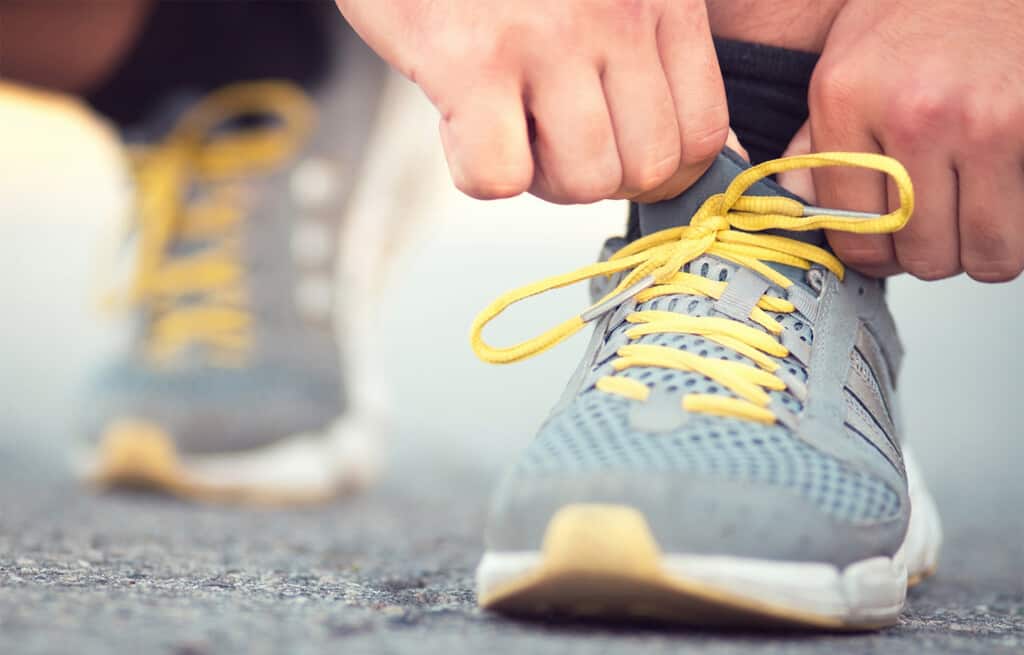
Overall, a good degree of cushioning will help reduce the impact of your weight on landing when you run. So, more cushioned shoes naturally help heavier runners feel more comfortable and reduce the impact of gravity on the joints. They should also be better for hard-packed terrain, so for running on the road or on hard trails.
Running shoes with stability features, such as a firmer midsole or support against over or under-pronation, can also be helpful for heavier runners. With the additional weight, you may have poorer running form if you are less fit. This can lead to striding unevenly, creating patterns of movement that can lead to overuse injuries and discomfort. To avoid this, shoes that offer a more supportive ride are a good choice.
How to choose your running shoes
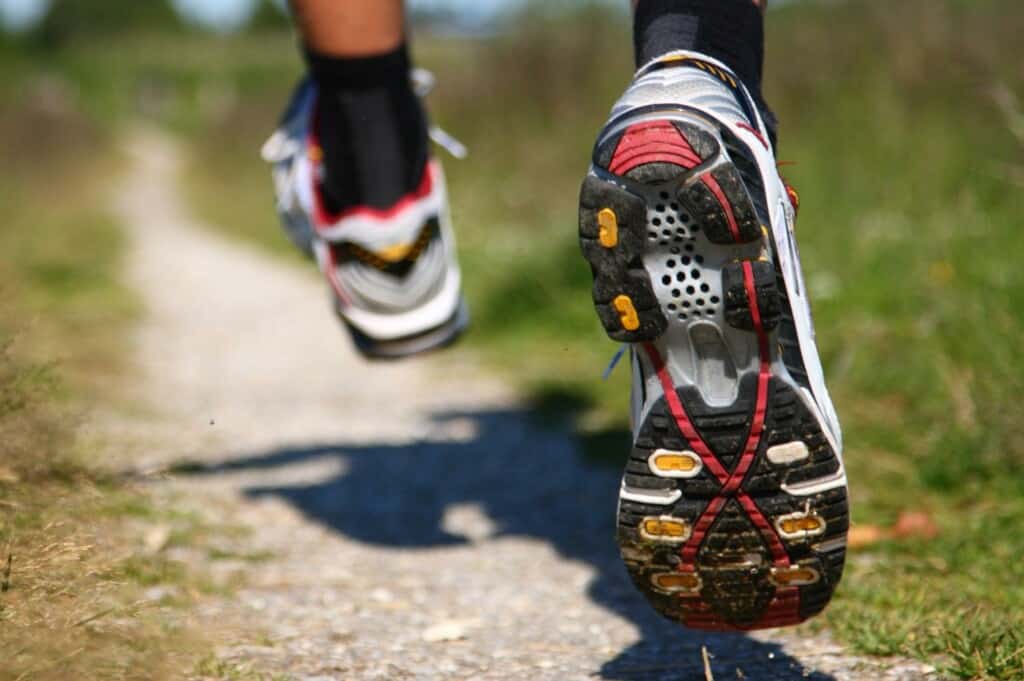
While it’s difficult to point to the ideal shoes for heavy runners as a general rule, here are some helpful tips we can give on how to choose the best shoes:
First impressions matter
There is anecdotal evidence among runners that the shoes that feel comfortable when you first try them on could be “the ones.” This doesn’t always ring true (see the shoes above that we’ve marked as needing some breaking in!), but it’s safer to assume that those best running shoes for you are more likely the ones that felt great from when you first tried them on.
Start with medium cushioning, then work your way up and down
It is perhaps better to strike down the middle when you pick your first running shoes. After you get used to running in shoes with medium cushioning, you can judge how you feel and what type of terrain you spend most of your time on, then experiment with more or less cushioning.
Softer isn’t always better
Ultra-soft cushioning might be better for walking than for running! When you run, the force you put through the shoe is several times higher than when walking, and too-soft, mousse-like midsoles will not give you enough support and energy return in those situations. Consider a balance between firmness and cushioning – firm cushioning that works for you.
Consider more than one pair
When you try to choose a go-to shoe for running workouts, you will quickly realize that some types of shoes are better for speed, and some are more comfortable for longer runs. You will be happier sacrificing comfort for agility in a 1-hour interval session while on a 20-mile long run while training for a marathon; you’ll probably wish you had swapped your lighter shoes for a more cushioned pair. We think regular runners should plan to have two or three different pairs of running shoes.
Frequently Asked Questions (FAQs)
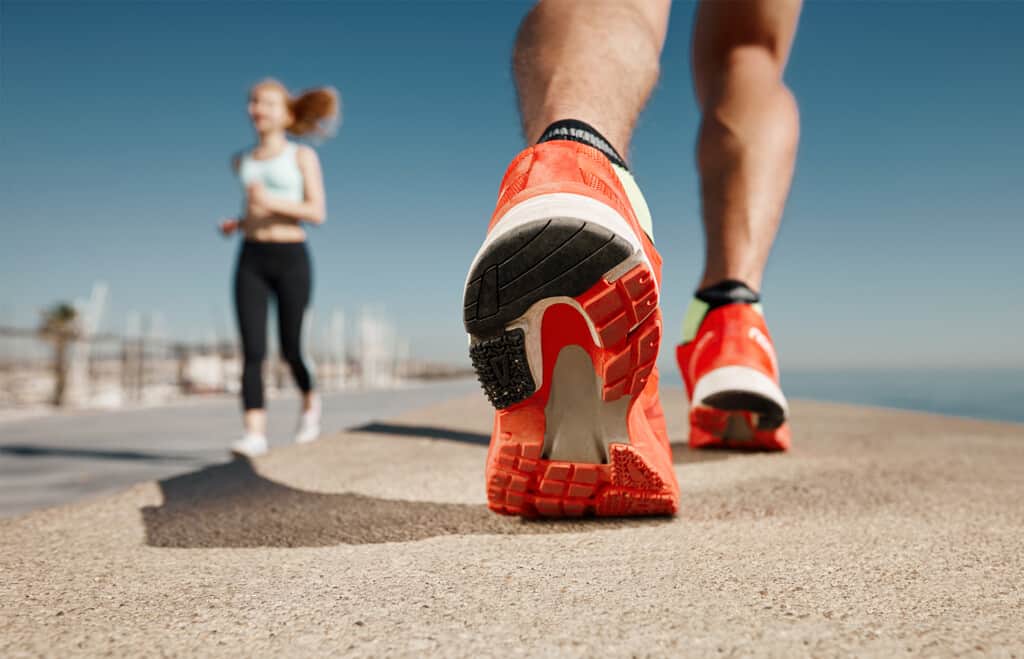
This isn’t necessarily true, but the best running shoes for heavy men and women can be the more cushioned ones. While extra cushioning ensures a more comfortable ride and a bit of added bounce to propel you on your runs, too much cushioning can make your shoe feel heavy and clunky. You should make sure that there is a good balance between cushioning and stability when choosing your shoes.
Moreover, soft cushioned shoes will not be quite as effective at absorbing the shock from your runs when you weigh more. They even run the risk of wearing out too quickly and are better suited to walking.
How much stability support you need from your shoes is influenced by your experience levels, your running style, and then your weight. A running shoe that has been designed for stability above all else might feel too firm for beginner runners. You should also be careful when choosing stability running shoes: making an uninformed choice can actually increase your risk of injury!
Always discuss with your running shoe shop adviser and do additional research with your particular requirements.
Yes, there is no reason why you shouldn’t run off-road if you weigh more! In fact, there are plenty of options for shoes for heavy runners and designed for trails. Long-distance running shoes will be the best, as they are made to withstand more of a battering from long runs. From the New Balance Fresh Foam range (such as the Hierro v7) to Hokas and the three pairs we’ve picked here, there are lots of excellent trail shoes for those who weigh a little more.
References
Muscle doesn’t weigh more than fat
Baylor College of Medicine
Dipali Pathak
https://www.bcm.edu/news/muscle-doesnt-weigh-more-than-fat
Defining Adult Overweight & Obesity
Centers for Disease Control and Prevention
https://www.cdc.gov/obesity/basics/adult-defining.html
Calculate Your Body Mass Index
National Heart, Lung and Blood Institute
https://www.nhlbi.nih.gov/health/educational/lose_wt/BMI/bmicalc.htm
Higher risk of injury in overweight novice runners
British Journal of Sports Medicine
https://bjsm.bmj.com/content/45/4/338.1
Heavy runners risk injury in lightweight running shoes
University of South Australia
https://www.unisa.edu.au/Media-Centre/Releases/2017-Media-Releases/Heavy-runners-risk-injury-in-lightweight-running-shoes/

